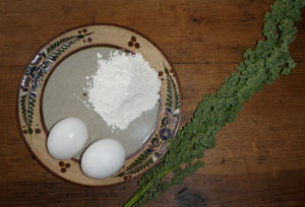Mexican Kitchen
When asked by the New York Times magazine to write about the most important contribution of the past millennium, Italian author Umberto Eco chose the humble bean. In How the Bean Saved Western Civilization, Eco points out that in the five centuries after the year 1,000 A.D. Europe’s population nearly tripled, and the amount of available animal protein was not enough to sustain the growing number of people. It was the increasing cultivation of legumes that provided the people with enough protein to become stronger, live longer, and re-populate a continent.
What the Euopeans discovered about the value of vegetable protein had been known to inhabitants of the Americas since wild beans were gathered in Oaxaca starting at approximately 8750 B.C. and cultivated in Tehuacan beginning at about 5000 B.C. Along with corn, squash and chile, beans completed the Mesoamerican staple diet. Nearly one-fifth protein by weight, they provided the nutrients necessary to actually multiply the dietary value of corn.
Sometimes eaten fresh with the whole seed container (stringbeans), beans were usually used mature and dry. They were boiled, made into fillings for tamales, tlacoyos and other tortilla variations, as well as being ground dry and used as the basis for soups and stews (a practice still common in the Sierra of Puebla and other predominantly indigenous regions.) Several varieties of phaseolus vulgaris (beans) had been domesticated before the Europeans came to the New World.
When the Spaniards arrived, they found, among many strange and exotic new foods, legumes which were comfortingly similar to the lentils, chick-peas and broad beans that made up a large portion of their diet aboard ship. They were especially fond of the small black beans of central and southern Mexico, which became one of the favored foods of the Spanish nobility. As samples of Mexican treasures, along with featherwork, textiles, gold and jewels, Cortés sent a sack of beans to Carlos V.
Scorned in later centuries as food for peasants, beans have recently become more elevated in status outside of Mexico (where they were never abandoned as a staple) as vegetarianism and health-consciousness dictate an interest in non-meat forms of protein. Looking for new and different ways of preparing them, foreigners have turned more and more to Mexican cookbooks.
The preparation of beans in Mexico varies from region to region, depending upon local cultivation, taste and tradition. The white, pink and pinto beans are more common in the north, while in the southern part of the country, black beans are still the favorites. No matter which type bean you prefer, all are readily available in markets north of the border, along with the garbanzos, lentils and fava beans enjoyed in a variety of ways in Mexico. The following recipes represent a cross-section of Mexican regional cooking and can be made in pressure-cookers, crockpots, stockpots or the traditional clay casseroles.
- Veracruz-style black beans: Frijoles negros a la veracruzana
- Yucatecan-style beans: Frijoles estilo yucateco
- Oaxacan-style lentils: Lentejas oaxaqueñas
- Cowboy beans: Frijoles charros
- Bean-smothered tortillas: Enfrijoladas

